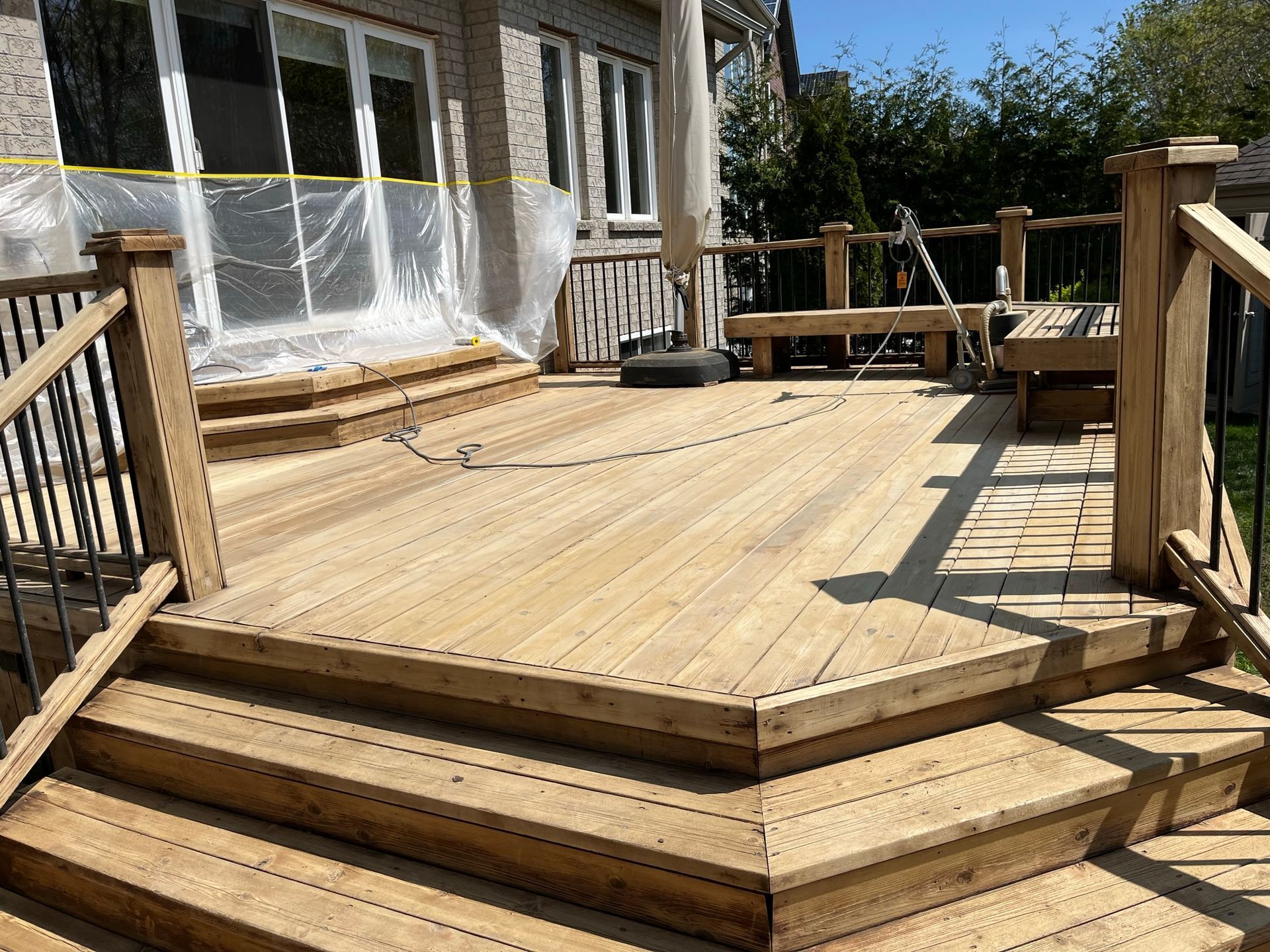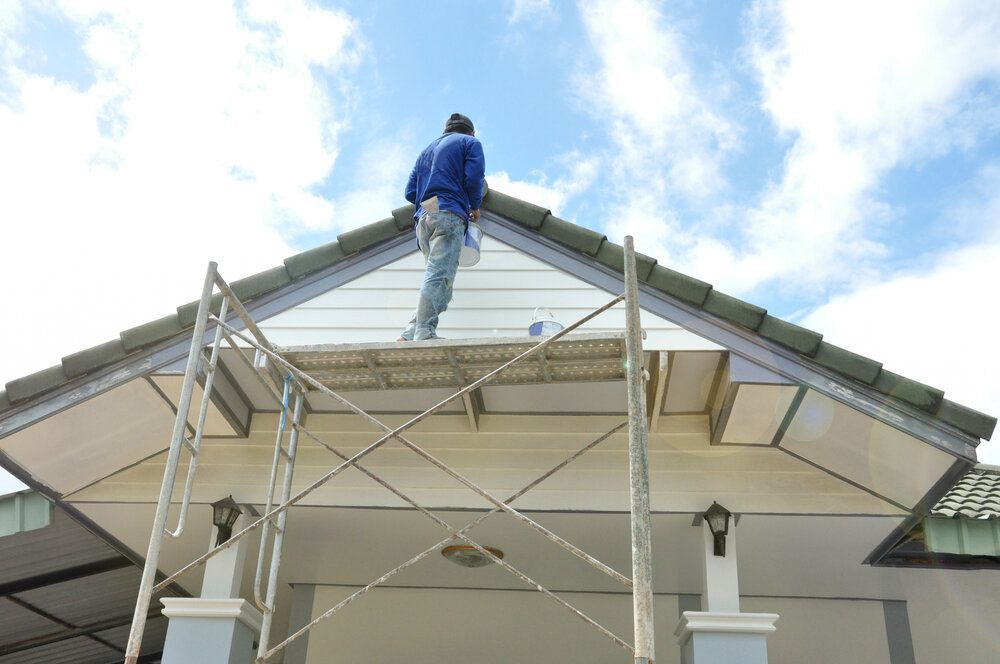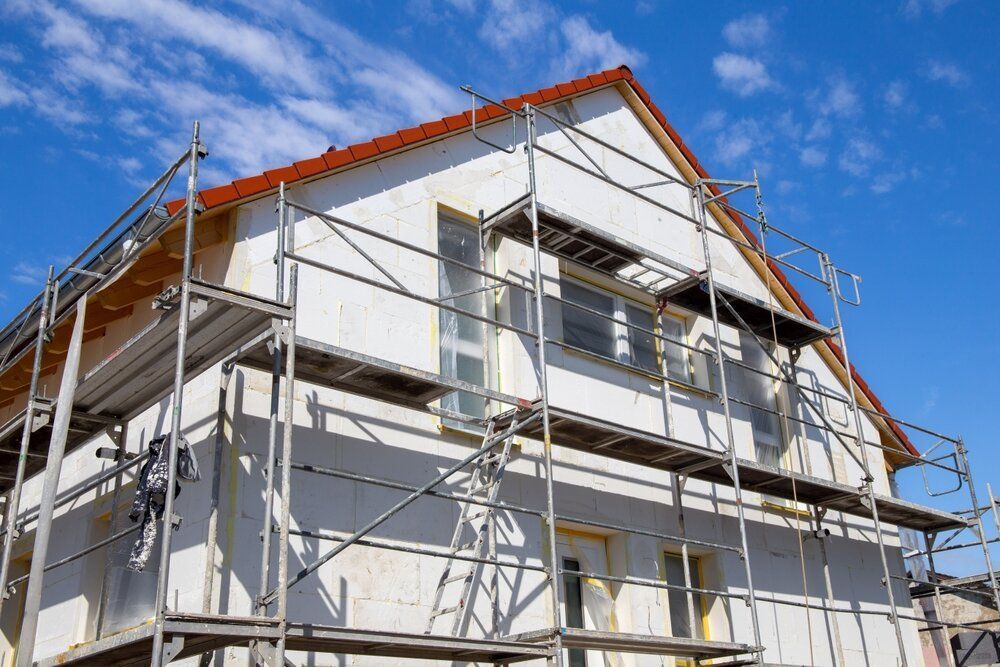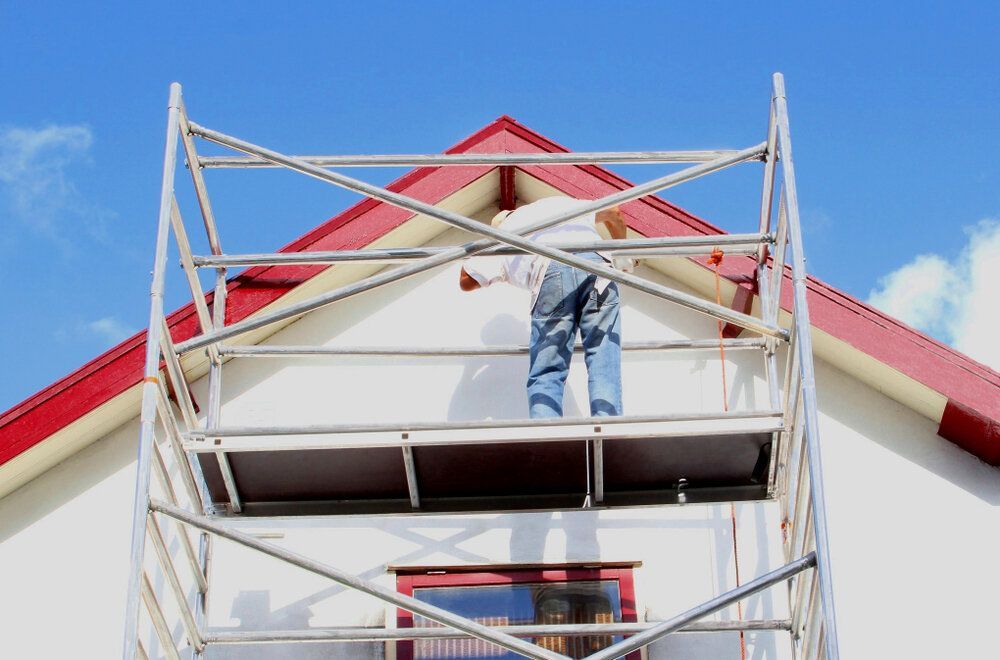Should You Sand Your Deck Before Staining?
Should You Sand Your Deck Before Staining?
Should you sand your deck before staining it? It’s a good question, and secretly you’re hoping the answer is no! If you’ve been researching how to stain your deck, you’ve probably seen that there is a lot more work that goes into it than just throwing some stain on. If we can get away with no sanding, that would save a lot of time and energy, but the reality is it is one of the most crucial steps to ensuring a professional finish.
What we should really be asking is what steps do I need to take to sand my deck properly. As Ottawa’s best deck staining and refinishing company, we’ve worked on hundreds of decks all over Ottawa, and we will tell you what we’ve learned along the way!

Your Deck Is New
You’ve got a new deck installed, and now you want to give it the final touches and have it looking great, and you want to protect it from the harsh elements.
It can be tempting to skip the sanding stage when you’re staining your deck, especially if your deck is new. Sanding is meant to smooth surfaces, and your new deck is already really smooth! Well, although smoothing the surface is a great reason to sand, it is not the only reason we need to sand our decks.
Sanding a new, already smooth wooden deck will open the wood grain, which both cleans the deck and gets it ready to accept a new stain. Ensuring that the stain you’re applying will soak into the wood is crucial for maximizing the life of the stain, and extending the time before you experience flaking or peeling, depending on what type of stain you buy.
We recommend using higher grit sandpaper when sanding a new deck, as we don’t want to be too intrusive on the new wood, we just want to open up the grains a bit. We typically use around 120 grit sandpaper on the new decks that we stain, and find anything around that level of grit is good enough to get a great-looking, long-lasting finish!
Your Deck Has Never Been Stained
Perhaps you built your deck a few years ago, but never stained or sealed it. You’ve likely noticed it has turned grey due to sun exposure, or maybe it has accumulated some mold and mildew on spots where it was shaded. Whatever the case, sanding is absolutely necessary for this instance.
Due to the aging and weathering from years of unprotected exposure, sanding has more benefits than just opening up the grain of the wood, as we talked about in the previous example. In this scenario, we need to get rid of any weathered wood, rid the deck of any organic growth (pressure washing may be required, but we’ll make another post going over that), and smoothening out rough parts so that when we apply the stain to the deck it feels like new.
We recommend using slightly more coarse sandpaper here because we need to remove a little bit more of the top layer of the deck that has been exposed to the sun and other elements. Usually, we start off with a 60 grit sandpaper, and if required we’ll go over it once more with an 80-100 grit sandpaper, although the second passing is not always required.
Removing Stain
The last popular scenario people find themselves in is having to remove an old stain so they can apply a new deck stain. It should be noted that although you can remove an old stain with sanding, it is often more practical and effective to remove stain with a chemical stripper and pressure washer.
Removing old deck stains by sanding is tedious work. It requires a minimum of three passes with a sander. First, using 30 grit sandpaper to remove all the stain, then following over that with a 60-80 grit sandpaper to restore the grains of the wood. Lastly, you will need to go over it once more with a 120 grit sandpaper, as the deck will likely still be a bit chewed up even after an 80 grit pass.
We never use this method to remove old deck stains and to rejuvenate a deck, as we have more consistent results pressure washing, followed by doing a light sanding.
Do you need a hand sanding and staining your deck in Ottawa? That’s why we’re here, we love helping you stain your deck! We even offer
free same-day quotes! Don’t hesitate to contact us with any questions you may have about staining your deck!
Get A Free Painting Estimate
We will get back to you as soon as possible.
Please try again later.


Useful Links
Contact info
Send Us A Message!
We will get back to you as soon as possible.
Please try again later.








